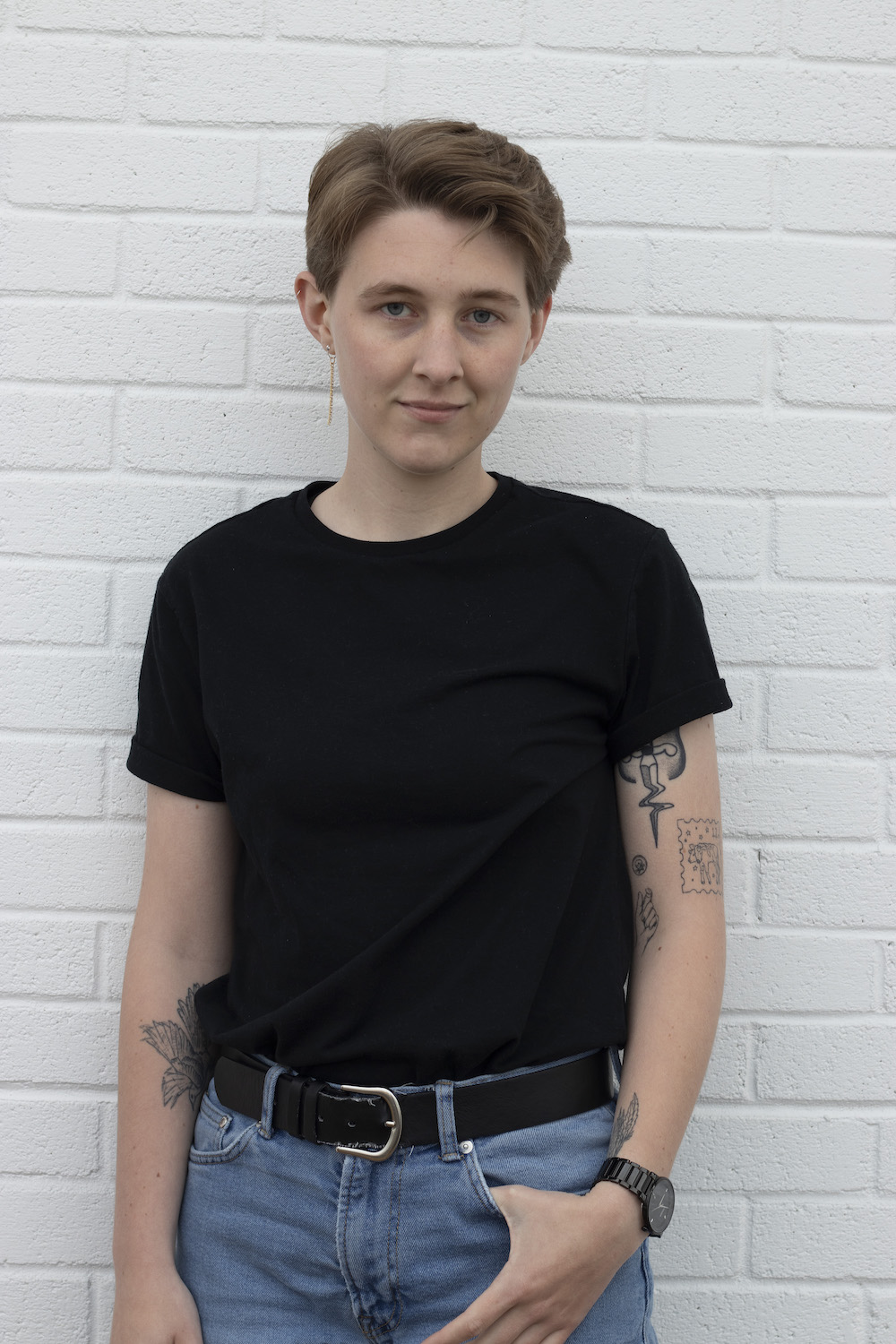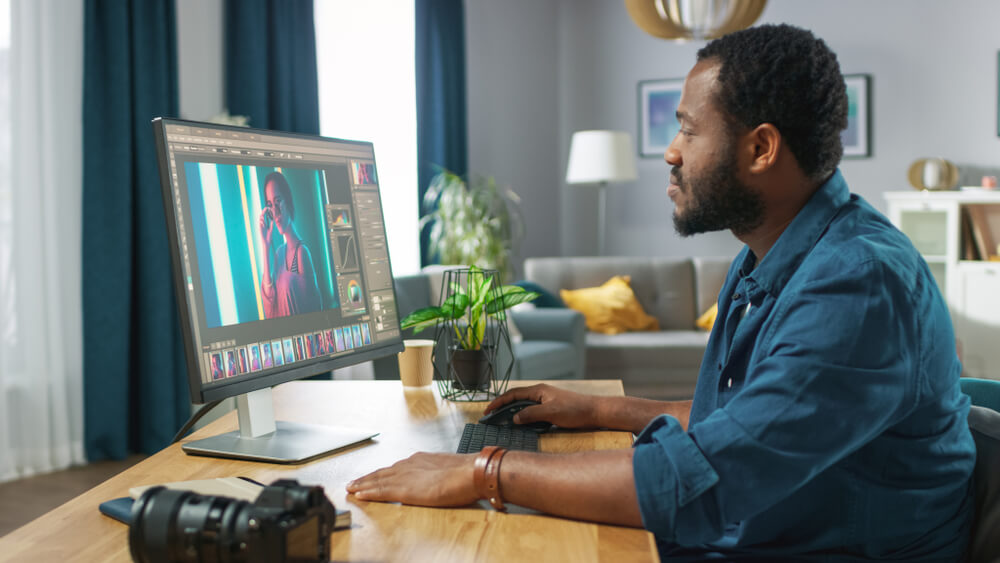What type of content do you primarily create?




It’s July, which means it’s Disability Pride Month! I’ve had the pleasure of connecting and befriending a number of other disabled podcasters in the community, and three were kind enough to share their top tips on the different ways podcasts can make themselves more accessible to listeners with disabilities.
Ely Fernandez-Collins is a podcast critic and host of the show Radio Drama Revival, as well as the Communications & Content Manager for Simplecast. They define themself as visually disabled, and are a noted advocate for accessibility practices in the podcast industry and beyond.
Caroline Minks is a producer, writer, director, and actor with a focus in fiction podcasts, including the acclaimed show Seen and Not Heard, which explores late-onset deafness through an atypical medium. Caro defines themself as Hard of Hearing.
Klaudia Amenábar is media critic, podcaster, and the Marketing Manager for Bloody FM, the podcast division of horror entertainment company Bloody Disgusting. She defines herself as living with a number of chronic and “invisible” disabilities, including visual and hearing impairments. Read on to learn how you can ensure your podcast is accessible to all listeners, from transcripts to episode production.
Show notes
Ely: The most crucial thing about show notes for visually disabled folks is that any links in your show notes should be attached to a descriptive clause, or meaningful text. There’s a difference between “fill out our intake form here” and “fill out our intake form”.
Klaudia: I try to link to anything we've referenced (either jokes or memes that we don't often have time to explain), plus social media and our other podcasts of course, and reading guides for some of the things we've discussed. We do funny points of interest for SEO and other reasons, but I also use the show notes to put additional research if we talked about something more in depth, and try to reference them in the episode so people know where to go if they're just hearing something auditorily.
Transcripts
Ely: Generally, screen readers can’t read bold or italics — that’s visually-indicated emphasis. You need to actually describe (with emphasis). Don’t totally avoid using it though; having bold, for instance, can help people with dyslexia, or vision problems that don’t require a screen reader.
Headings are a central method in how screen reader users can skim and skip around a document, so make sure you’re using headings to indicate acts and scenes, or changes in environment or even perhaps shifts in topic for non-fiction.
Having time-stamps for everything can be incredibly painful to listen to via screen reader because it adds so much noise before the transcript’s content, but other disabled people really need it. This is why headings can be great; I usually recommend marking the timestamp for each heading, and that way if someone is looking for a particular time, everyone can skim headings to find the closest one.
Not all screen readers can read PDFs; in fact, most can’t, because PDFs have to be specifically tagged and formatted for a screen reader to read it, and not all PDF exports are made equal. Don’t just make your transcript a downloadable PDF; embed it directly onto a webpage for the most ease. You can check your PDF’s accessibility using things like the free PDF/UA tool — or even better, install the free NVDA screen reader and actually use a screen reader to check, so that you can have the experience a screen reader user will have.
 |
Caro: I make sure they're complete and available at the same time the episode is released, and that the link is easy to find and access. I usually put "TRANSCRIPT" in capital letters right near the top of the show notes, and that serves as the link! I also like to make sure my transcripts are as detailed as possible. The goal should be to offer a comparable experience to listening — this means things like music cues, credits, sound effects, etc. need to be included.
If every podcast had decent, free transcripts available, that alone would make a huge difference. I can't tell you how many times I've wanted to check out a show, but found it too challenging to try and follow along without a transcript. It's a simple way to allow many more people to enjoy your work, but a massive number of podcasts exist without even the most basic version available to their audience.
Online presence: Website and social media
Ely: WAVE, a web accessibility evaluation tool by WebAIM, will analyze your webpages for accessibility problems, from color contrast to link text. It’s the number one most useful tool for ensuring screen reader accessibility.
You need to think about colors and contrast, and the size and serif of your font. Color analysis can get really into the weeds with text and background contrast ratios — the minimum required is usually a ratio of 4.5:1 — but WAVE will help you out by finding color contrasts outside the ratios. Fonts are generally recommended as sans serif, which has the added bonus of being the best font style for folks with dyslexia.
Simply having a website increases your podcast’s accessibility for visually disabled people. A lot of podcatchers aren’t actually all that screen reader accessible, depending on what kind of device and screen reader is being used; having a website will help visually disabled folks find your podcast in the first place.
Alternative text (or “alt text”) for images is hard to identify how and what to do. The requirement for websites has to do with information conveyance — if the image is conveying some kind of information that isn’t conveyed identically elsewhere in text, you have to give it alternative text to let screen reader users know what information is being conveyed via the image. Otherwise, “aesthetic” or “incidental” images aren’t required to have alt text (and are generally required to not have alt text, in fact) in order to cut down on noise when the screen reader is talking.
 |
Production process
Klaudia: Our production process on both podcasts has changed over time — we started recording very simply in Zoom, then Zencastr, and now SquadCast. I'm very lucky that two of my cohosts edit audio and so they do all the editing. I do any podcast booking and working with publicists, and that is some of my highest lift work. If I didn't know the industry well and who to contact, it would be extremely inaccessible, and I've had to figure a lot of it out on my own.
Ely: If I am receiving a script for a recording or sides for an audition, I ask for a copy in a non-PDF format so I can change the font size myself and have my screen reader read it without issues. Be prepared to have that!
When booking guests, ask them if they have any particular disability needs; you might just not know that they have a visual disability. If you have any documents, pictures, or websites that you plan to screen share during your conversation, send them all in advance. If I’m having a bad vision day, I can’t screen read the document you’re showing me on the recorded Zoom call; I need to have them in advance so I know what’s in them.
Just like with people who are D/deaf or Hard of Hearing, visually disabled people who use screen readers get audio-input exhaustion. Do you know how much nonsense my screen reader will try to tell me because the internet isn’t formatted correctly for visually disabled people and accessibility technology simply hasn’t fully caught up? Please be flexible regarding timing, scheduling, and deadlines, and take audio/visual exhaustion into account when working with visually disabled people.
Final thoughts
Disability isn’t a one-size-fits-all label, just like how no two experiences of it are alike. The best thing you can do is to seek out resources like this one, see what the disabled community is saying regarding what they’d like to see in accessibility practices, and ask the people with disabilities in your life what would make listening to their favorite shows easier. We all want as many people as possible to enjoy the podcasts we work so hard to create. By following the advice above, you can ensure that your show is easily discoverable, listenable, and shareable by everyone.





























%201.svg)


















%20(1).JPG)
